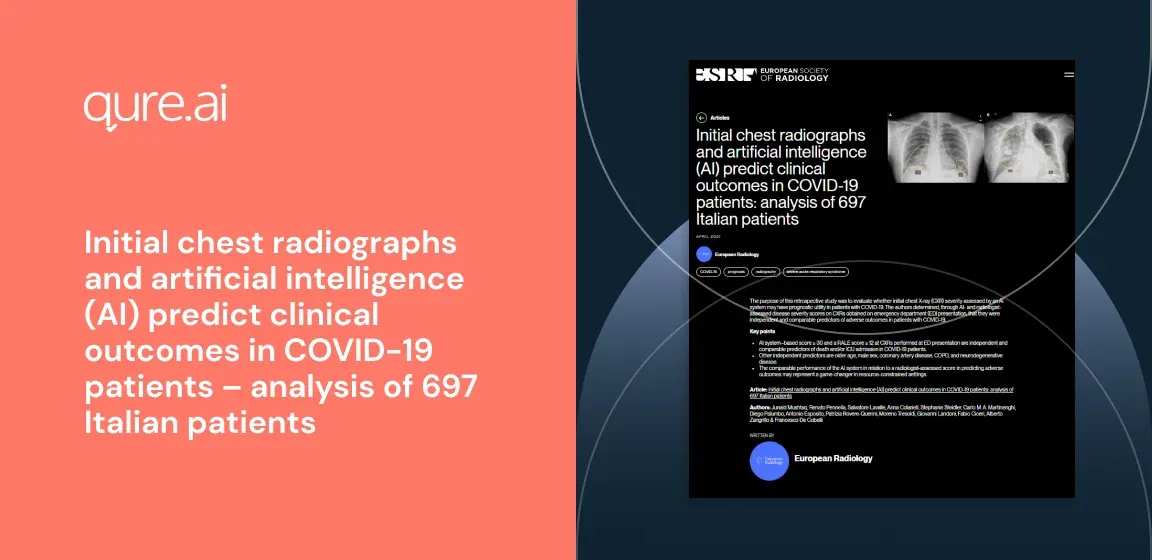Published 17 Sep 2020
Initial chest radiographs and artificial intelligence (AI) predict clinical outcomes in COVID-19 patients – analysis of 697 Italian patients

Back
Authors
Junaid Mushtaq 1, 2, Renato Pennella 1, 2, Salvatore Lavalle 1, 2, Anna Colarieti 1, 2, Stephanie Steidler 1, Carlo M. A. Martinenghi 1, Diego Palumbo 1, 2, Antonio Esposito 1, 2, Patrizia Rovere-Querini 2, 3, Moreno Tresoldi , Giovanni Landoni 2, 5, Fabio Ciceri 2, 6, Alberto Zangrillo 2, 5, Francesco De Cobelli 1, 21
Citation
1. Clinical and Experimental Radiology Unit 2. Experimental Imaging Center 3. IRCCS San Raffaele Scientific Institute 4. Milan 5. Italy 6. Faculty of Medicine and Surgery 7. Vita-Salute San Raffaele University 8. Via Olgettina 58 9. Milan 10. Italy 11. Department of Internal Medicine 12. IRCCS San Raffaele Scientific Institute 13. Milan 14. Italy 15. Unit of General Medicine and Advanced Care 16. IRCCS San Raffaele Scientific Institute 17. Milan 18. Italy 19. Department of Anesthesia and Intensive Care 20. IRCCS San Raffaele Scientific Institute 21. Milan 22. Italy 23. Hematology and Bone Marrow Transplantation 24. IRCCS San Raffaele Scientific Institute 25. Milan 26. Italy